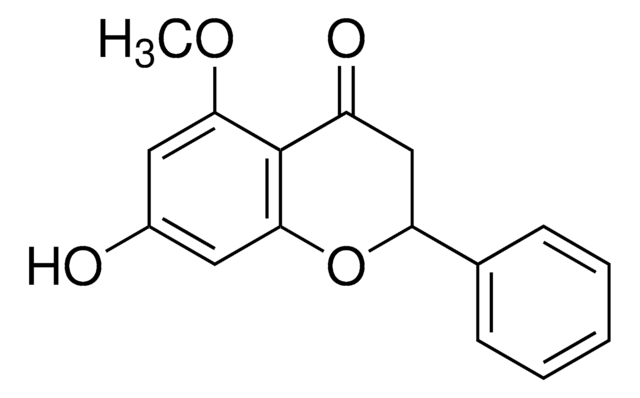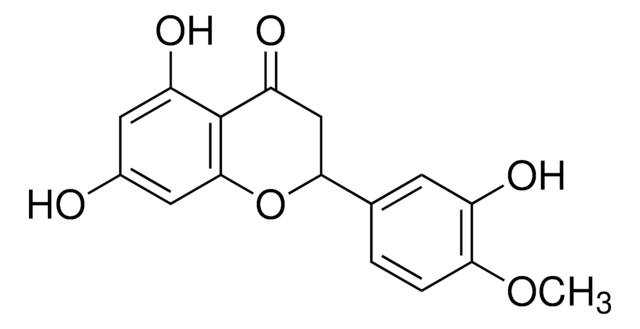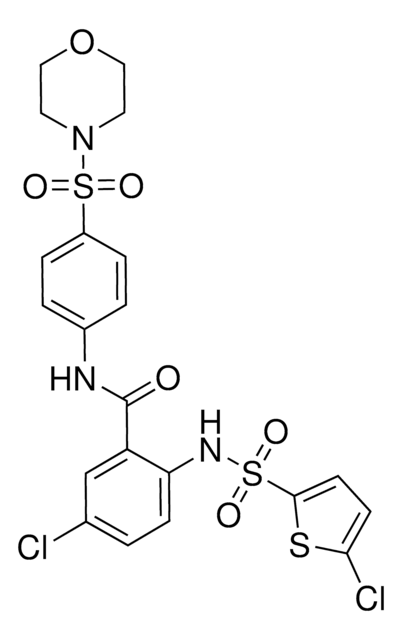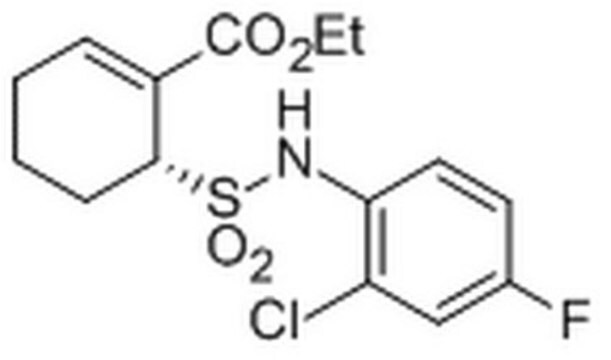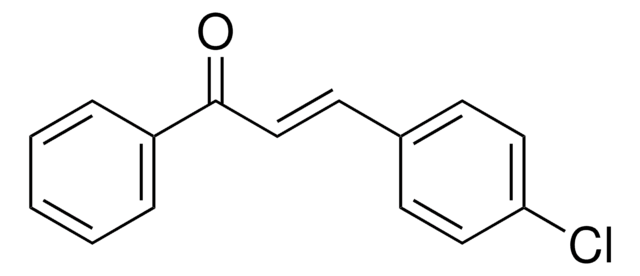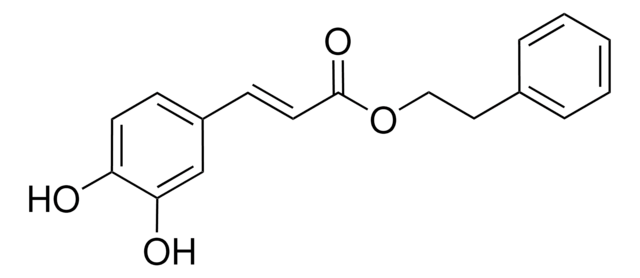Key Documents
C8249
Cardamonin
≥98% (HPLC)
Synonim(y):
(2E)-1-(2,4-Dihydroxy-6-methoxyphenyl)-3-phenyl-2-propen-1-one, (8CI); Alpinetin chalcone, (E)-2′,4′-Dihydroxy-6′-methoxy-chalcone
About This Item
Polecane produkty
Poziom jakości
Próba
≥98% (HPLC)
Postać
powder
kolor
light yellow to dark brown
rozpuszczalność
DMSO: ≥20 mg/mL
temp. przechowywania
room temp
ciąg SMILES
O=C(/C=C/C1=CC=CC=C1)C2=C(O)C=C(O)C=C2OC
InChI
1S/C16H14O4/c1-20-15-10-12(17)9-14(19)16(15)13(18)8-7-11-5-3-2-4-6-11/h2-10,17,19H,1H3/b8-7+
Klucz InChI
NYSZJNUIVUBQMM-BQYQJAHWSA-N
Szukasz podobnych produktów? Odwiedź Przewodnik dotyczący porównywania produktów
Zastosowanie
Działania biochem./fizjol.
Hasło ostrzegawcze
Warning
Zwroty wskazujące rodzaj zagrożenia
Zwroty wskazujące środki ostrożności
Klasyfikacja zagrożeń
Acute Tox. 4 Oral
Kod klasy składowania
11 - Combustible Solids
Klasa zagrożenia wodnego (WGK)
WGK 3
Temperatura zapłonu (°F)
Not applicable
Temperatura zapłonu (°C)
Not applicable
Certyfikaty analizy (CoA)
Poszukaj Certyfikaty analizy (CoA), wpisując numer partii/serii produktów. Numery serii i partii można znaleźć na etykiecie produktu po słowach „seria” lub „partia”.
Masz już ten produkt?
Dokumenty związane z niedawno zakupionymi produktami zostały zamieszczone w Bibliotece dokumentów.
Klienci oglądali również te produkty
Nasz zespół naukowców ma doświadczenie we wszystkich obszarach badań, w tym w naukach przyrodniczych, materiałoznawstwie, syntezie chemicznej, chromatografii, analityce i wielu innych dziedzinach.
Skontaktuj się z zespołem ds. pomocy technicznej



